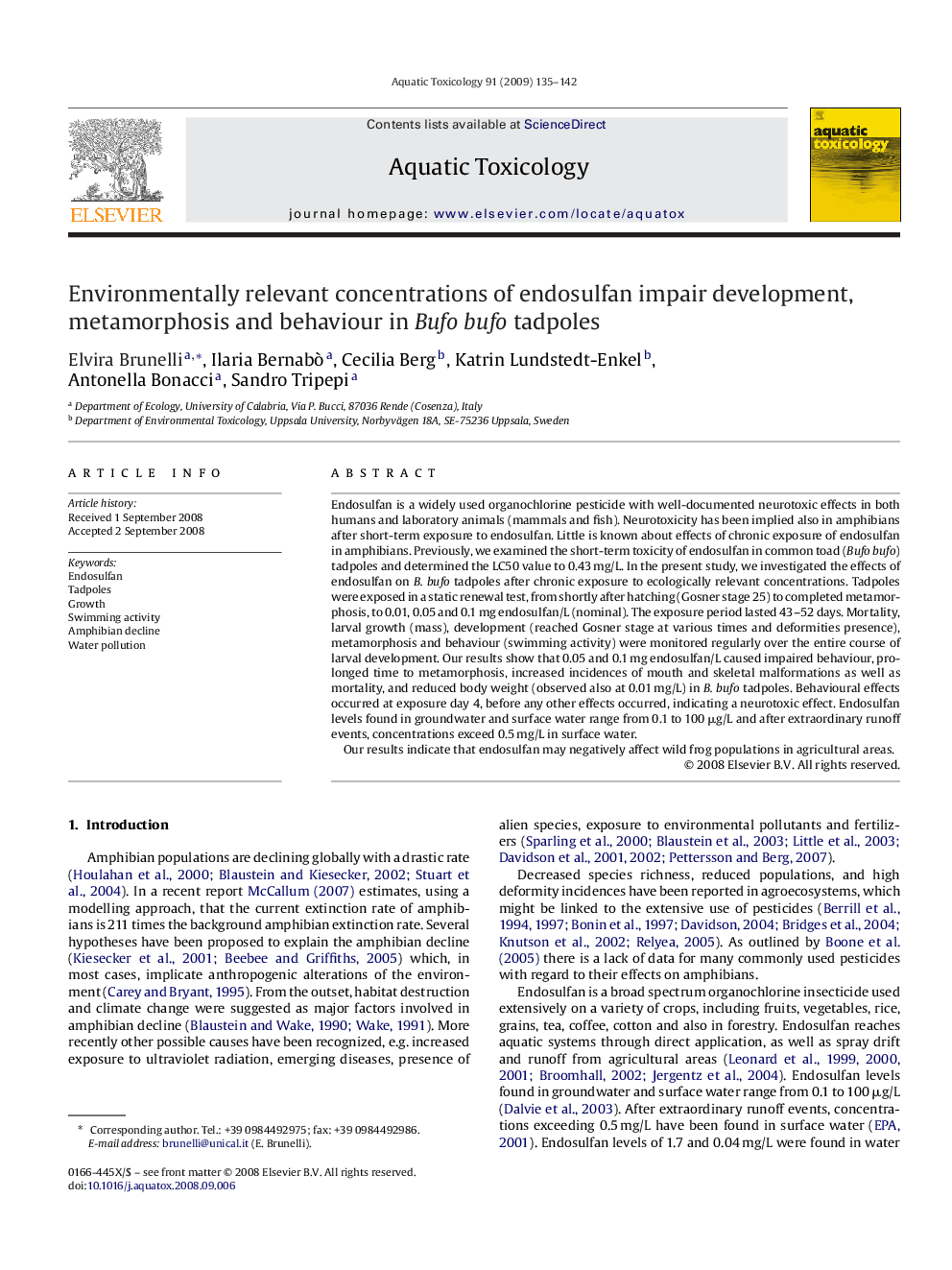| Article ID | Journal | Published Year | Pages | File Type |
|---|---|---|---|---|
| 4530772 | Aquatic Toxicology | 2009 | 8 Pages |
Endosulfan is a widely used organochlorine pesticide with well-documented neurotoxic effects in both humans and laboratory animals (mammals and fish). Neurotoxicity has been implied also in amphibians after short-term exposure to endosulfan. Little is known about effects of chronic exposure of endosulfan in amphibians. Previously, we examined the short-term toxicity of endosulfan in common toad (Bufo bufo) tadpoles and determined the LC50 value to 0.43 mg/L. In the present study, we investigated the effects of endosulfan on B. bufo tadpoles after chronic exposure to ecologically relevant concentrations. Tadpoles were exposed in a static renewal test, from shortly after hatching (Gosner stage 25) to completed metamorphosis, to 0.01, 0.05 and 0.1 mg endosulfan/L (nominal). The exposure period lasted 43–52 days. Mortality, larval growth (mass), development (reached Gosner stage at various times and deformities presence), metamorphosis and behaviour (swimming activity) were monitored regularly over the entire course of larval development. Our results show that 0.05 and 0.1 mg endosulfan/L caused impaired behaviour, prolonged time to metamorphosis, increased incidences of mouth and skeletal malformations as well as mortality, and reduced body weight (observed also at 0.01 mg/L) in B. bufo tadpoles. Behavioural effects occurred at exposure day 4, before any other effects occurred, indicating a neurotoxic effect. Endosulfan levels found in groundwater and surface water range from 0.1 to 100 μg/L and after extraordinary runoff events, concentrations exceed 0.5 mg/L in surface water.Our results indicate that endosulfan may negatively affect wild frog populations in agricultural areas.
